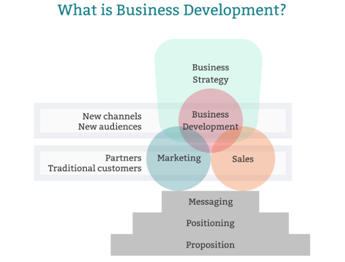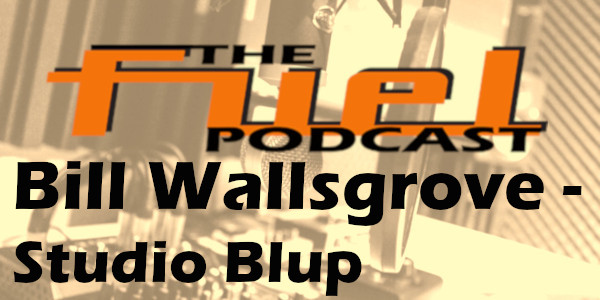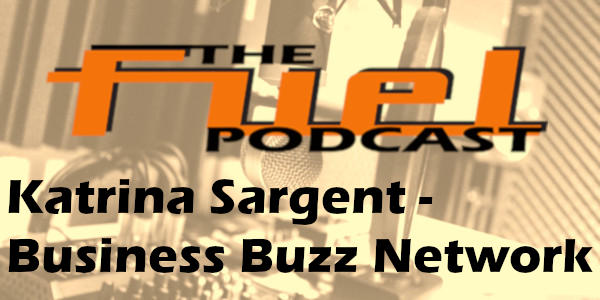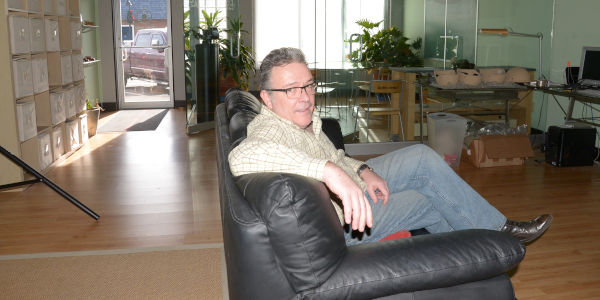Unhide, FFS! 10 new commandments of marketing, benchmarking is copying. We’re not in Kansas anymore.
Cool rules. Bill Wallsgrove, brand expert and agency mentor drops some major news about Studio Blup and shares info on the future of the retail industry and brands.
How to use soft selling skills in video networking, the art of video networking, the future of physical networking, what we miss from the office environment, goal mapping and personal development tips
Keith is a music wonk. He loves music and cannot work without it – much to the annoyance of his wife Donna, The Advertist’s Editor and his other colleagues.
There is no right or wrong time of day for him to listen to music and it runs in his family, who have all picked up various instruments at one time or another.
One of Keith’s most treasured music jobs was working and singing with the incredibly talented Peter ‘Memory’ Banks, erstwhile songwriter and ivory tickler for British 80’s pop/rock sensation After The Fire (ATF).

In the 80s Keith and Peter worked together in a band called Zipcodes with the much loved and still missed ATF drummer Pete King. Peter engineered and produced a few of Keith’s many other recordings and in the early 2000s, Peter asked Keith to take on vocal duties for the newly revived ATF as part of their comeback tour.

So it naturally fell to Peter to write and produce the theme tune for The Fuel Podcast, which Peter wrote and produced while also campaigning as an MP for the Green Party in his constituency of Mersea Island, Essex .
It’s called The Hustl (which was going to be the original name for the podcast) and you can listen to in full here:
We hope you like the music. It’s an earworm for sure and if you get a chance, please drop Peter a note of support via his Twitter feed.
What is Business Development?
Business Development. It’s a job description that appears to have multiple definitions.
Back in the 70s and 80s even into the 90s, a sales job title conjured up images of smooth-talking jack-the-lads who could charm people into buying things they didn’t want; those who “had the gift of the gab”.
In the last decade, UK sales positions have been rebranded to make them more palatable to the more sensitive souls in the business world.
A quick peruse of LinkedIn’s job board will reveal some interesting non-sales-sounding sales positions.
The Business Development job title is often used as a synonym for sales but the role of business development can sometimes have a perplexing number of applications. Business development is a skill that blends creativity, new business sales, client development, brand marketing and account management. The weighting of each discipline can vary, depending on a number of factors, an obvious one being whether it is a board level or middle management-level responsibility

The responsibilities of the role encompass new and existing business. In general, business development executives have the ability to create new outreach strategies and ideas, and execute on them. At the same time they can work with a company’s existing client base’s marketing team to recommend and implement successful new strategies and plans to help develop brands and increase the individual worth of each client to the agency.
A business development director will tend to have a lot more responsibility for the direction of a new business campaign and plans for client strategies, while business development managers tend to look after the implementation and execution of them. Referring to the diagram, the ‘Business Development’ circle can move vertically and horizontally within an organization, depending on the strategy.
This is why many companies prefer to outsource the role to business development agencies and consultants. Finding people with the right mix of talents can be time-consuming, costly and – let’s be honest here – there isn’t always a permanent need for it; like accountants or managing directors because it’s not always a fixed, definitive job description. So the role is often an interim or semi-permanent position. Business development agencies have the ability to work at the board strategic level or at the coal-face, implementing and executing strategies that have already been agreed upon.
Where many companies fall short in the outsourcing route is by not taking the counsel of these seasoned business developers. Bringing them in at the very start of the process allows them to guide the plan, make recommendations and suggest ideas that they believe are achievable.
A good business development agency or consultant will insist upon a consultation and ‘warming up’ process before the strategy launches. This time is best used laying out plans, agreeing milestones and making sure that all the required resources are ready. Therefore, the marketing and brand teams need sufficient heads up, as well as the sales and leadership teams. If client development is included in the brief, then introductions will need to be made, to avoid confusion.
Once the blueprint is agreed, it is simply a case of letting the business developer loose and carefully managing the roll-out of the plan.
From this, we can see that the role of business development can encompass many different skills and influence multiple departments of a company. It is a highly creative role (from a business knowledge perspective) and it can also require fundamental sales techniques. Above all, whether it is an in-house role or outsourced, a good business developer can become an integral synapse between important nerves of your organization, allowing insight and intelligence to feed and help grow your company.
Well, we’re getting there. We’ve managed to press-gang a few industry celebs to come aboard and offer their wisdom. But before that, here’s a preview of what you can expect.
Don’t forget to sign up and subscribe wherever you get get your podcasts.
Podcast: Play in new window | Download (Duration: 1:23 — 1.9MB)
Subscribe: Google Podcasts | Spotify | Amazon Music | Android | Pandora | Stitcher
More blood, sweat and tears than your average Baptist revival but we made it! We wanted to create something different from the usual hour-long blah-fest podcast that pervades the industry. The Fuel Podcast is something a little bit different, created by a team of people that actually know what it’s like to be on the sharp end of new business sales day in, day out. If you hit ‘subscribe’ to our podcast, we’ll keep you updated with loads of nifty interviews, tips and tales from qualified practitioners of the science that is new business. Fuel will pull on the experience of leaders of companies in a variety of sectors, highlighting how they go about drumming up new business and generating revenue. No lofty bon-mots that you can find on the first page on any Google search. No siree. Fuel gets at the coal-face of industry to deliver useful and practical advice to help you make it rain.
So why?
The Fuel Podcast is a product of years of work behind the scenes of direct sales platform The Advertist. Born from adversity, The Advertist has shrugged off attacks from much bigger entities to become a truly independent and vibrant source of new business insight, data, news People Moves and daily ammunition for anyone working in the field of new business prospecting for public relations, creative, digital, advertising marketing and social agencies. The Advertist supplies reliable information that gets you to the door of the UK’s leading and hot challenger brands and companies across 24 sectors. Frankly speaking, no-one does it better. We consistently punch above our weight because we deliver.
In describing The Advertist, we use the phrase “highly regarded” because there isn’t an award for “Best New Business Development Platform” but if there was, we’d win it.
- Best in service
- Best in price
- Best in quality
Take a free trial and see for yourself. We offer a clear and unambiguous pricing structure that makes it easy to build The Advertist into your new business activity.
Email us at hello@theadvertist.com for more information.
Back in the 90’s, I worked for a very famous advertising agency owner who told me a story about his work on the Mercedes Benz account.
His agency used to use a market researcher, who used to kick off his meetings with “So what do you want to prove?”
This story was nearly as popular as the one about my boss storming into the office of a client that owed him money and planting a fire axe through his desk with a note pinned to it that read “Where’s my fucking money?”
The first story was a great illustration of the perils of relying on data. You don’t have to look very hard or far to find data to support any theory you want. Actually so is the second one, but more of that later.
Anyone who relies purely on data to drive sales, ends up with digital ads selling light fixtures to people that have just bought light fixtures. It’s an algorithm of the crudest data.
As someone with a keen interest in the sales process, I can absolutely confirm that data only gets you 80% of the way to closing a deal. It gives you the who? what? when? and where? but never the why?
The why? is the creative bit. It’s the bit that opens the door. It’s the bit that closes the sale, it’s the bit that makes you immediately drop what you are doing and go straight to a company’s web site to order.
Name me a hit song that has been composed on data. Name me an Oscar-winning movie directed with data. Data is cold. Creative is the thing that triggers your emotions. This is why we will never completely replace humans with cyborgs, because cyborgs don’t know how to push our emotional buttons. CMOs do.
A good CMO or a good sales person will use data to get them into position and then, at the right time deploy the creative to seal the deal.
A great sale begins with great targeting; the right person, with the right product at the right time in the right place. But it is always quickly followed by superb empathy and emotional triggers. A trigger could be fear of missing out, or how good someone will look driving a particular car, or how much younger a person would look using this make-up. Or in the case of my former boss, a trigger could be a fire axe through a desk that follows months of finely targeted letters and invoices.
The actor Edward Norton summed it up beautifully recently, talking about his movie ‘Motherless in Brooklyn’: “What audiences want is an experience, where they enter into a thing that feels authentic on its own terms. They want characters they can connect with and get carried through worlds that take them away. People get hung up on the wrong metrics. I don’t think audiences think about [a film’s] length or comprehension.” He’s right. If a film – or a piece of music for that matter – is powerful enough and drives our emotions, then we’ll go with it and attach all sorts of emotions to it.
And this is what I believe the art of being a good CMO or even a great sales person; emotion. Data cannot tell you what I’m feeling or why I might be tempted to buy your product. Data might have told you where I am, who I am, what I might want and when I might want it but only creativity will provide my emotions with a reason to take the next step. The why?
The reason we have data is not so that we can dispense with creativity. It’s not a binary choice, ironically. It can be a lovely blend of data and creativity. Techniques honed on both ends of the proposition – beautifully targeted and the right message with the right trigger.
Please don’t ever be afraid of being creative. It’s the personality behind your brand. If you rely wholly on data to do your marketing, you find the personality behind the brand is Mark Zuckerberg and personally, I could think of nothing scarier than those eyes, staring unblinkingly back at me. He’s got lifeless eyes. Black eyes. Like a doll’s eyes…
With anything like a podcast in the making, you need a dependable and reliable partner to join you on the journey. You need a partner who wants the same things and is prepared to explore brave new media opportunities and boy did we find one.
Commercial Creative is a relatively new business. We’ve been working with them for the last 4 years and we’ve watched them grow from humble beginnings, into a business that went through a major merger and acquisition to become an established division of Commercial Group, supporting the colour critical, deadline driven, creative services sector.
Creative Systems’ market leading experience as the creative industry’s most dynamic and knowledgeable Systems Integration Specialists, delivers best in class copying and printing systems, MPS, proofing and cross-media applications and we’re proud to name them as headline sponsor for season 1 of our podcast.
And if your company is mindful of its carbon footprint and wants to reduce the environmental impact of its decisions, then Commercial Creative Systems has your back. Social Value and Sustainability are at the heart of its business and CCS is the recipient of the Queen’s Award for Enterprise – Sustainable Development category.
If you need a quality service backed by years of experience working with the UK’s most agile marketing and comms agencies, then check out their web site at: creativesystems.co.uk or call them on 0208 758 7750.
“Now the headlight was another sight
We had two on the left and one on the right
But when we pulled out the switch all three of ’em come on.”
It’s only natural that after a few years, a company’s sales effort might require an a-dapter kit, just like the song “One Piece at a Time” – a humorous tale about a man trying to build his own Cadillac by stealing occasional parts from the assembly factory where he worked.
In the rush to fill order books, a company might be willing to take on new business that meets a financial deadline but at the same time, places the resources of the business under unnecessary strain. So much strain that when the right piece of business does come along, the company’s departments are so stretched that they can’t do the job that they really want to do.
It’s a direct result of an uncoordinated sales strategy, or perhaps no sales strategy at all. Without a firm hand on the sales tiller, any ship can go adrift and before you know it the course correction required is drastic.
Sitting down with new business expert Alex Kirkpatrick, who runs one of the UK’s most successful new business generation agencies, Incite, it becomes clear that a company needs to focus on sales from the get-go. Working with a well-planned marketing drive, sales can literally make themselves, but working in an uncoordinated fashion, they might end up costing more than money.
Alex’s consultancy works with the most demanding of client types – marketing and advertising agencies, but his principles have been learned over the course of more than two decades and can easily be parlayed into any b2b or b2c environment.
Firstly, any new business isn’t necessarily good new business. As Alex says, there are many forms of bad new business but this number is far outweighed by the number of potentially bad clients: “Looking at long lists of data, making notes such as: ‘likely no money’, ‘would never work with us’, is a surefire way to curtail your market and destroy any chance of winning great clients from outside of your usual target suspect list.”
Alex recommends creating a client profile – an imaginary client that has all the features your company would find attractive: “from the type of person and internal culture you like working with, all the way through to the kind of product they sell and buyers they target.”
“The back end looked kinda funny too
But we put it together and when we got through
Well, that’s when we noticed that we only had one tail-fin”
Obviously, not all prospective clients have the same degree of appeal, so Alex always advises his clients to divide them up into three categories: ‘Must work with’, ‘Should work with’ and ‘Could work with,’ and typically, this list would be like a Chevvy tail fin: sharp at the top and thicker at the bottom.
When you don’t have a coordinated strategy, you can end up with ‘Frankenstein’ sales. These are sales without a framework or, as Alex sometimes finds, they are over-complicated by converging activities on social media and in different channels at different times: “If you think about the Must, Should, Could structure, then there are three established approaches to effectively target these markets: Account Based Marketing (ABM), InBound Marketing and Outbound Marketing.”
The Must category (the thinnest) tends to be more one-to-one marketing-based. Creative and personal. However these take time and patience and could potentially take up to three years to come to fruition, depending on review anniversaries.
The Should category can be broken down into common sectors and given the outbound marketing treatment, so sales calls and/or direct marketing using case studies of similar work or in similar sectors.
The Could category is your widest possible audience and the right marketing treatment for this is usually inbound. However, as Alex advises, this is where the science part comes in because you know less about these prospects than you do the other ones, so you’ll need to create content tailored to very specific personas and you don’t know these people.
And while this may seem like a lot of work, don’t worry, help is at hand. In fact help might actually be in the same building as you, so it’s always worth introducing internal sales incentive programs to draw out any prospective closers working in the same company as you.
Now gettin’ caught meant gettin’ fired
But I figured I’d have it all by the time I retired
I’d have me a car worth at least a hundred grand.”
If your plan is to use just word-of-mouth to sustain your business, think again there Red Ryder. As Alex says: “90% of agencies rely on referral new business for at least some part of their journey. Sadly for too many it is often how they start and grow and why they decline and ultimately fail.”
You will always need an ongoing new business or sales program because if you don’t, when you need it, it’s not there. If you rely on referrals all the time, you are not in control of your destiny and companies that do this “..are whatever they are referred to be,” according to Alex.
Alex suggests taking charge of your own sales destiny and to add proactive marketing campaigns that best enhance your company’s brand values: “Marketing your own brand effectively allows you to test technologies and tactics, creating cases and expertise that can be proved and sold to clients.”
“So we drove up town just to get the tags
And I headed her right on down main drag
I could hear everybody laughin’ for blocks around
But up there at the court house they didn’t laugh
‘Cause to type it up it took the whole staff
And when they got through, the title weighed sixty pounds.”
So the moral to the story is to be prepared for all new business eventualities. A company needs to be agile enough to be able to effectively react to all potential new business events – be it a cold request, a meeting follow-up, a call, an email, whatever the circumstance; your business needs a response that flatters the new business prospect.
“Make it look amazing,” said Alex. “Graphic design is so important, irrespective of whether your output is an aesthetic one, client buyers still care about design.”
You can adjust the response according to the type of lead, but don’t over-egg the omelet: “Better to get something good faster, than something amazing late,” says Alex. “Ultimately, look at your deck as a person.” Don’t drone on about your own accomplishments. Keep it tight. Keep it focused and keep it short because the prospect can always ask for more if they’re interested.
And as a CMO, it is absolutely part of your role to be contributing to the direction of your company’s new business strategy, working hand in hand with the business development or sales team: “CMOs should have a responsibility to sit at the heart of a company’s growth plan, to help develop a position, a proposition, build awareness, create cut though and increase conversation,” said Alex.
To help your company maximize its sales effectiveness, the following areas can be included as part of your bailiwick:
- Top (blogs and content), mid (case studies) and bottom funnel (products, process, proposals) content creation and promotion
- Search engine marketing
- Social outreach and management
- Events and Webinars
- Re-targeting through biddable media
- Lists and directories
- Intermediaries
- PR and speaker opps.
- Shows and expos
- CRM
- InBound platforms
- Product development
- Trends and innovations
- Compliance
When all is said and done, marketing and sales need to be as harmonious as Johnny Cash and June Carter Cash. One works so much better with the other when they both have the same intent.
Piecing sales campaigns together and being reactive, not proactive can wrong foot any company.
But when sales and marketing work hand-in-hand the effect can be stunning – as stunning as a jet black, fin-tailed 1960 Cadillac.





